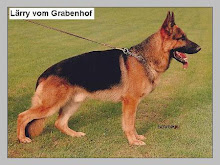Dog Training: Getting Your Dog’s Attention (Part 3)
On the fourth day, as you repeat the procedures of the first three days, you’ll discover that there’s no more opposition and no games. This is simple enough, unless your dog happens to become momentarily distracted and forgetful.
And that is just exactly what you want to happen, so that he will learn to overcome momentary temptation and distraction and keep his attention focused on you. After all, obedience is needed particularly in time of emergency, and since you are going to build obedience as well as character into your dog, it is not too much to ask, that, at a time when other dogs would yield to distraction and temptation, your dog has his attention totally focused on you.
Your job from day four until your pet learns to ignore temptation is to use distraction and temptation during your fifteen-minute training sessions. The procedures will be nearly the same as the first three days, except that you will walk in the direction of the distraction or temptation and hope that your dog will rush recklessly toward it.
You will of course have chosen that precise moment to wish him goodbye on his journey, turn, and walk fast in the opposite direction. And, as you may expect, his journey will be short (fifteen to twenty feet) before he turns around and walks toward you. Your dog will not hate you for having to turn around because he won’t associate his abrupt change of direction with you at all.
What Your Dog Will Know For Sure
The last four days have shown him that you will move whenever you choose, and in whatever direction you choose without first checking to see if it’s alright with him. Your dog knew this. What happened was his fault because he took his attention and eyes off you for a moment and gave in to temptation. It was just “coincidental” that you decided to move, at that same moment, and in the direction opposite to that in which he was heading.
You know that the move wasn’t really a coincidence, but your dog doesn’t know this, and will never know. What he will come to realize is that when a distraction or temptation appears, that is the exact moment that you will choose to reverse your direction of travel.
If you do your work well for the next few days, your dog will come to consider every temptation or distraction as a reminder and a cue to keep his eyes and attention on you. Distractions and temptations include people and things such as a skateboarder, a strange cat, another dog, a rolling ball, or a plate of food.
The list can go on and on, depending on your dog’s personality. However, to have someone call your dog by name in an attempt to distract him must be considered unfair. You must stick to other situations and things.
In Conclusion
To conclude this part of training, remember to always walk briskly in a straight line, with confidence in your movement. If you hesitate or walk slow, your dog will not develop the necessary confidence. Never give your dog verbal commands when working with him on the long-line. You’re not teaching him to heel yet.
For now, you’re teaching him four things. First, when tied to a person, he must move with that person. Second, your determination, will, and status are such that you will walk anywhere and at any time without first checking to see if it’s alright with him. Third, in order for him to be aware of your movement, and in which direction you’ll be walking, he needs to pay attention to you because you won’t let him know in advance. Fourth, when distraction or temptation appears, they are not excuses to be inattentive. On the contrary, that is when he must be the more attentive and focused on you.
Wednesday, January 28, 2009
Dog Training:Getting Your Dogs Attention (3)
Labels:
dog,
dog trainer,
dog training,
dogs,
obedience training for Dogs,
pet training,
pets,
puppies,
puppy training
Subscribe to:
Post Comments (Atom)


No comments:
Post a Comment